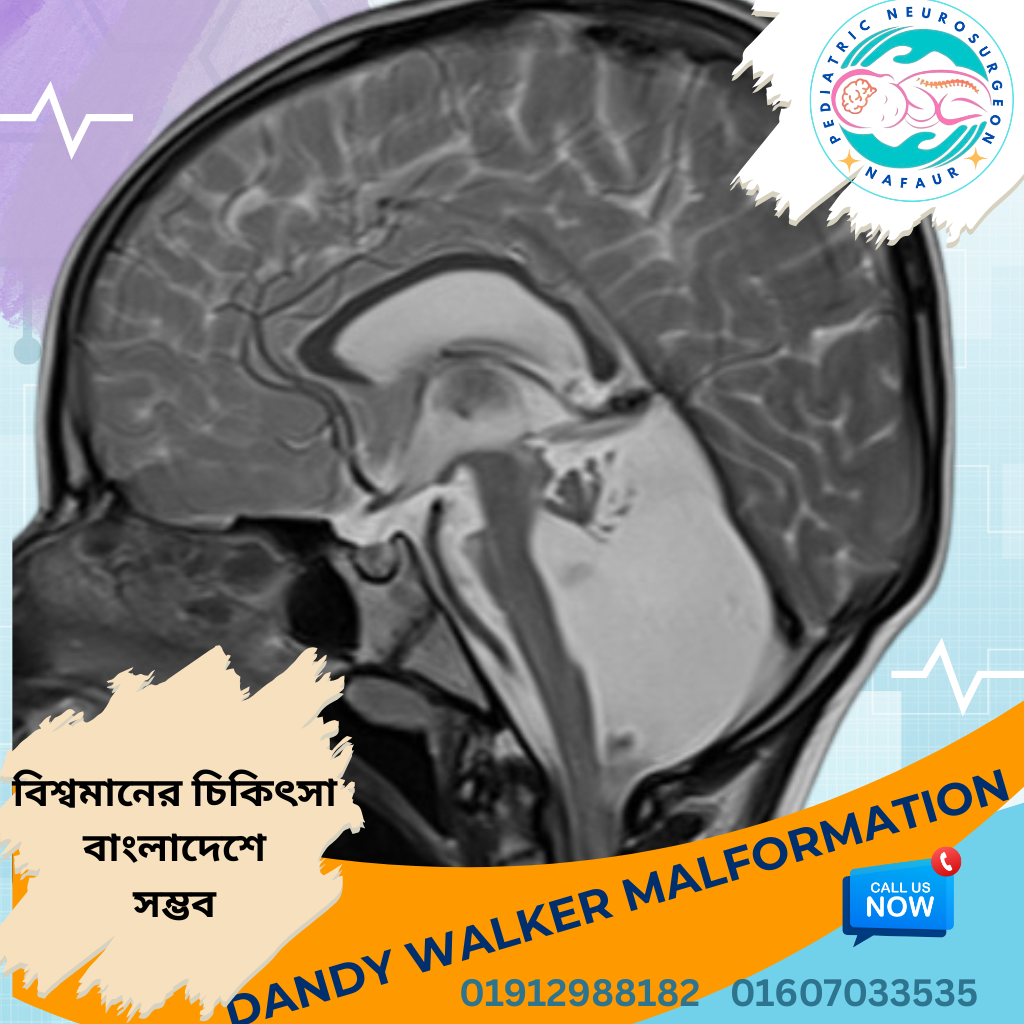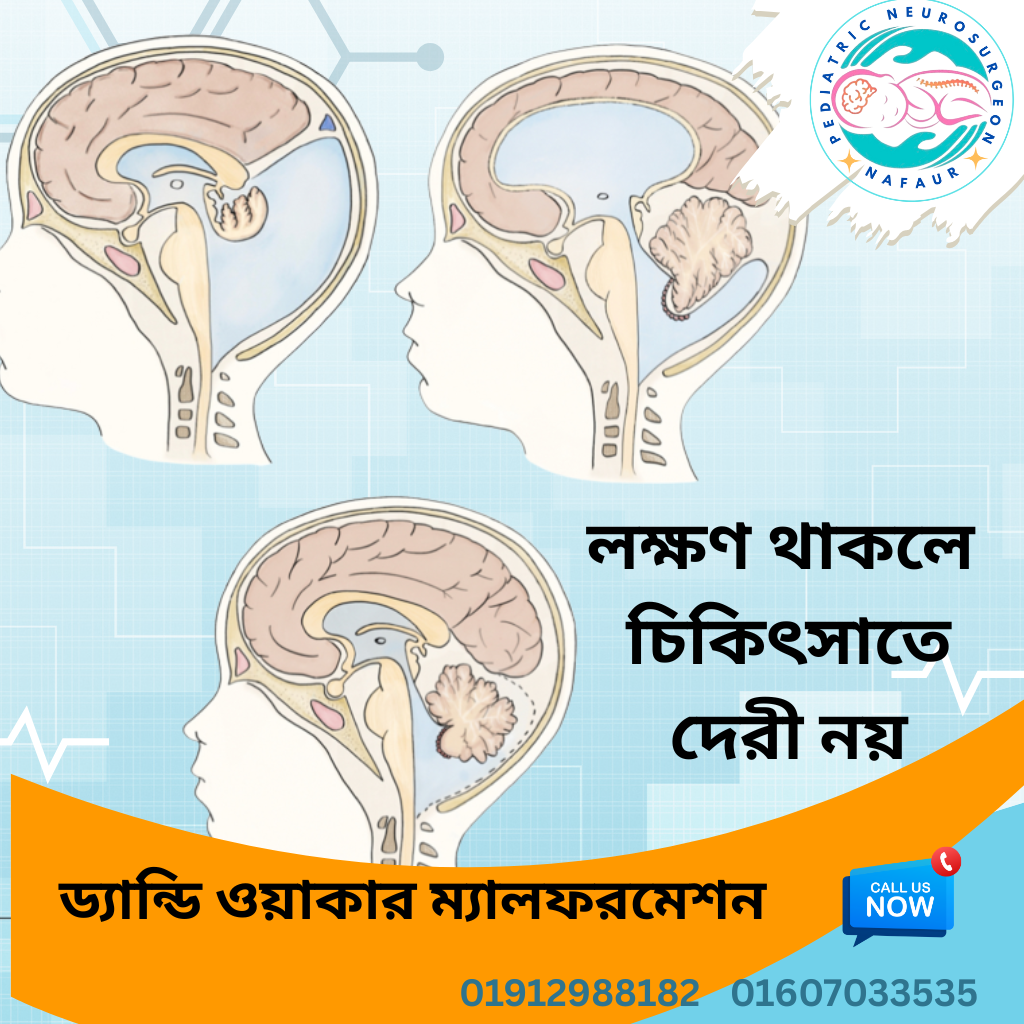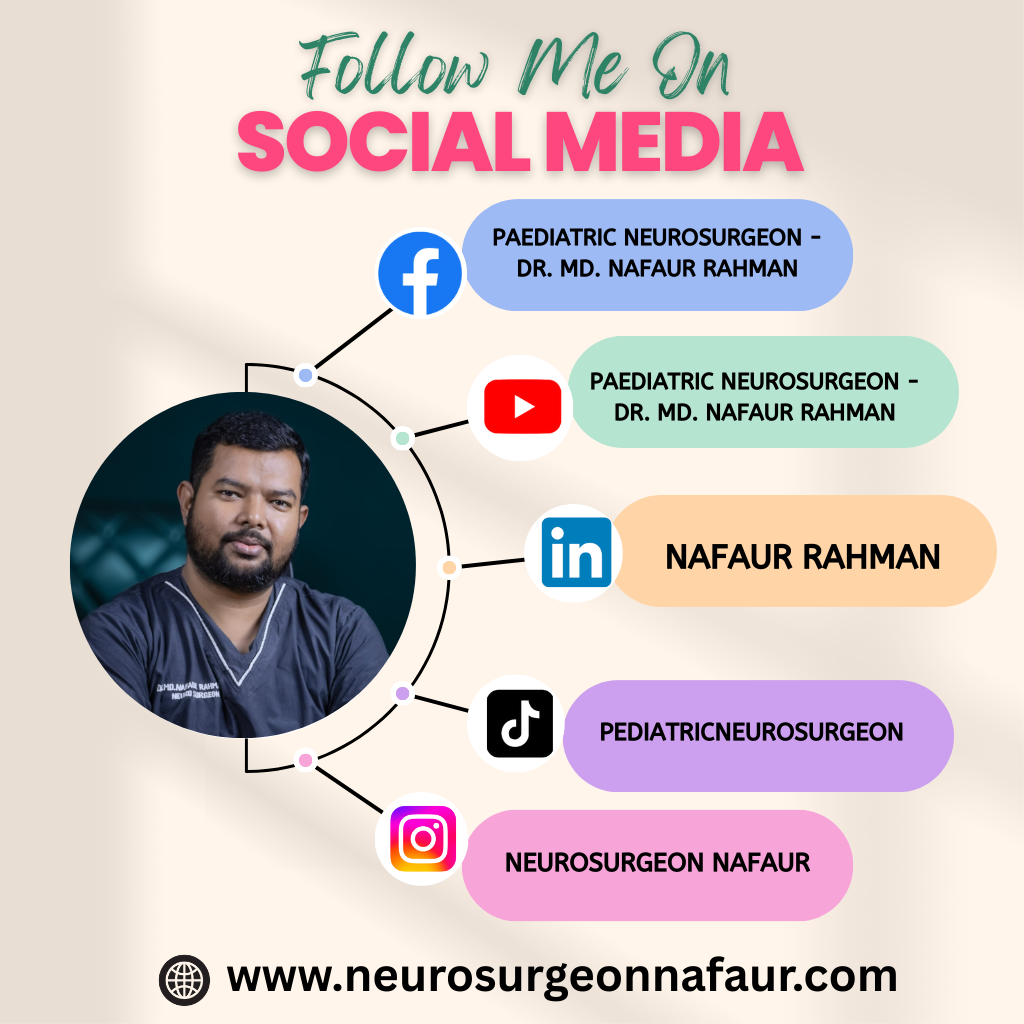Dandy Walker Malformation
Dandy Walker Malformation
Dandy-Walker Malformation (DWM) is a rare but serious congenital brain disorder that affects the development of the cerebellum (the part of the brain that controls movement and coordination) and the fluid-filled spaces around it. It is characterized by:
Underdevelopment or absence of the cerebellar vermis
Enlargement of the fourth ventricle
Cystic formation near the base of the skull
Often accompanied by hydrocephalus (excess cerebrospinal fluid in the brain)
In Bangladesh, cases of Dandy-Walker Malformation are often diagnosed late, sometimes only after the child presents with macrocephaly, delayed milestones, or seizures. With proper early neurosurgical intervention, many of these children can have improved developmental outcomes.
🎯 Causes and Risk Factors
While the exact cause is not always known, contributing factors include:
Genetic mutations or chromosomal abnormalities
Intrauterine infections
Maternal diabetes or malnutrition
Exposure to teratogens during pregnancy
Family history of neural tube defects or brain malformations
Low access to antenatal screening and neonatal neuroimaging in rural Bangladesh results in underdiagnosis and delayed treatment.
📊 Prevalence and Bangladesh Context
Though globally rare, Dandy-Walker Malformation may be underreported in Bangladesh due to:
Lack of specialized pediatric neurodiagnostics in peripheral hospitals
Limited availability of fetal MRI or advanced prenatal imaging
Delayed referrals to neurosurgeons after hydrocephalus develops
Lack of awareness among general pediatricians and obstetricians
Dr. Md. Nafaur Rahman is working to raise awareness about early neuroimaging in high-risk pregnancies and timely pediatric neurosurgical consultation.
🧒 Common Symptoms in Infants and Children
Rapidly increasing head size (macrocephaly)
Bulging fontanelle or tense soft spot
Poor muscle coordination or balance (ataxia)
Developmental delay, especially in motor skills
Seizures or abnormal eye movements
Irritability, vomiting, and lethargy (signs of increased intracranial pressure)
In some cases, facial abnormalities or other brain malformations
🧪 Diagnosis of Dandy-Walker Malformation
Accurate diagnosis requires:
Prenatal ultrasonography (usually in the second trimester)
Fetal MRI for better brain structure visualization
Postnatal MRI or CT scan to assess brain anatomy
Neurological evaluation to determine functional impact
Genetic testing if multiple anomalies are present
In Bangladesh, MRI availability is growing in tertiary care centers like NINS, but rural referrals remain a challenge.
🛠️ Neurosurgical Treatment Options
There is no cure for the underlying brain malformation, but surgical treatment focuses on managing symptoms, especially hydrocephalus and increased intracranial pressure.
🔧 Surgical Options Include:
✅ Ventriculoperitoneal (VP) Shunt Surgery
The most common and effective treatment
Drains excess cerebrospinal fluid from brain to abdomen
Performed by Dr. Nafaur with high success rates
✅ Endoscopic Third Ventriculostomy (ETV)
A minimally invasive option for selected cases
Avoids long-term shunt dependency
✅ Posterior Fossa Decompression
Rarely required, but considered in severe cyst compression
“Timely CSF diversion surgery can prevent permanent brain damage and improve quality of life.” — Dr. Md. Nafaur Rahman
🧠 Postoperative Care and Follow-Up
After surgery, Dr. Nafaur’s team provides:
ICU monitoring and pain management
Monitoring for shunt blockage or infection
Regular developmental assessment
Physical and occupational therapy referrals
Parental counseling and long-term follow-up care
🌟 Prognosis and Long-Term Outlook
The outcome for children with Dandy-Walker Malformation depends on:
Severity of cerebellar underdevelopment
Presence of hydrocephalus and timing of surgery
Co-existing genetic or neurological disorders
Access to post-surgical rehabilitation
With proper care, many children can attend school, walk, and live with independence, although some may need special education or therapies.

















